Its name is almost the same as that of the hybrid C-HR, and it sits on the shortened platform of the bZ4X. During a brief introduction, we experience that the Toyota C-HR+ is larger and heavier than its near-namesake, but still delivers the familiar dynamics.
Where should you place the Toyota C-HR+ in the electric lineup?
It’s not easy to immediately place the Toyota C-HR+. That plus in its name means it’s larger than the regular C-HR, although it still operates in the C-segment. Furthermore, it has nothing to do with that Coupe High Rider based on the Corolla platform. The C-HR+ sits on a shortened version of the e-TNGA platform that debuted with the bZ4X. With a wheelbase of 2.75 meters and a length of 4.52 meters, it’s more compact, but it’s a centimeter wider than the quite substantial bZ4X. When we walk around the C-HR+ covered in ‘prototype’ stickers, the Peugeot e-3008 initially comes to mind as a competitor, but that car is taller. The C-HR+ fits in Toyota’s EV lineup between the Urban Cruiser and the bZ4X, and you could consider it as a Skoda Elroq, the smaller brother of the Skoda Enyaq, but that doesn’t feel quite right either. Just as the regular C-HR has been positioned between segments since 2016, its electric brother with the + addition does the same.
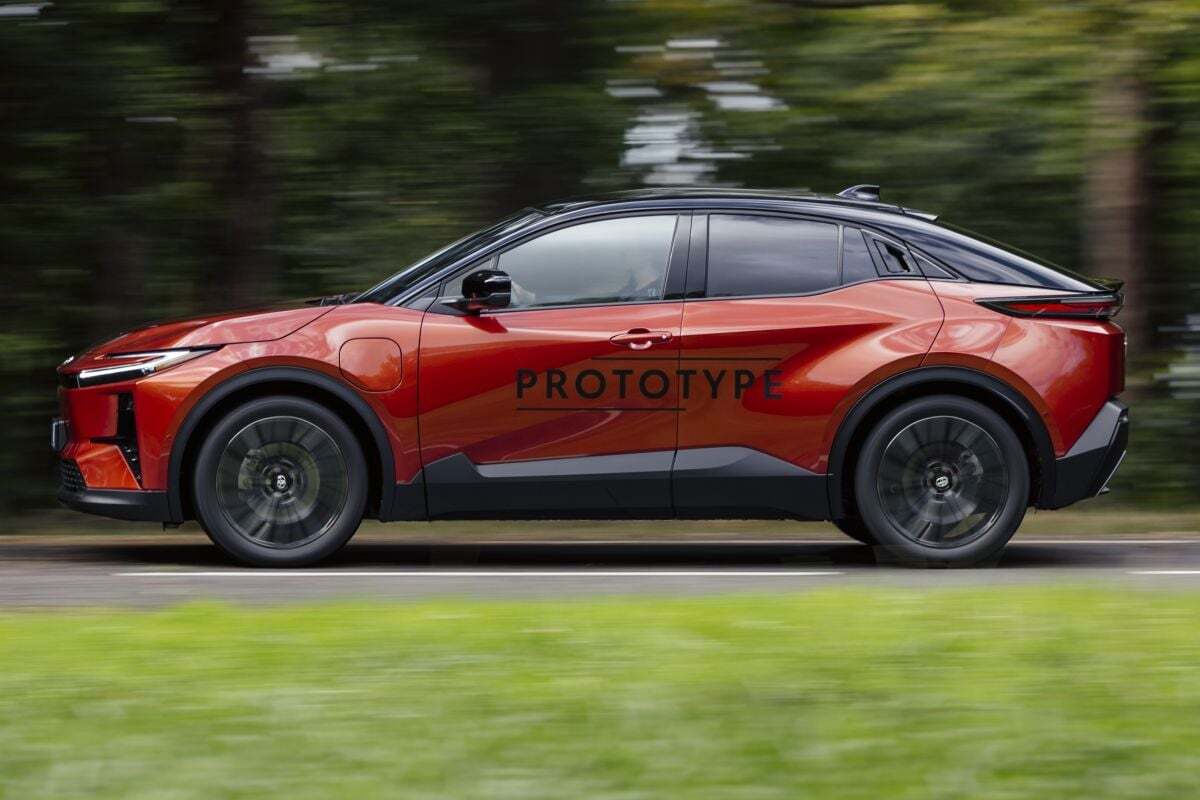
So positioned between segments, is it more spacious than a normal C-HR?
The rear space proves adequate for legroom and headroom for people just over 1.90 meters tall. However, as a rear passenger, you have difficulty placing your feet under the front seats. Of course, there’s a battery pack under the floor! Toyota positioned this lower than in the bZ4X because the brand was keen to give the car a low center of gravity. The luggage compartment offers 416 liters of capacity, which is reasonable for a crossover in the C-segment.
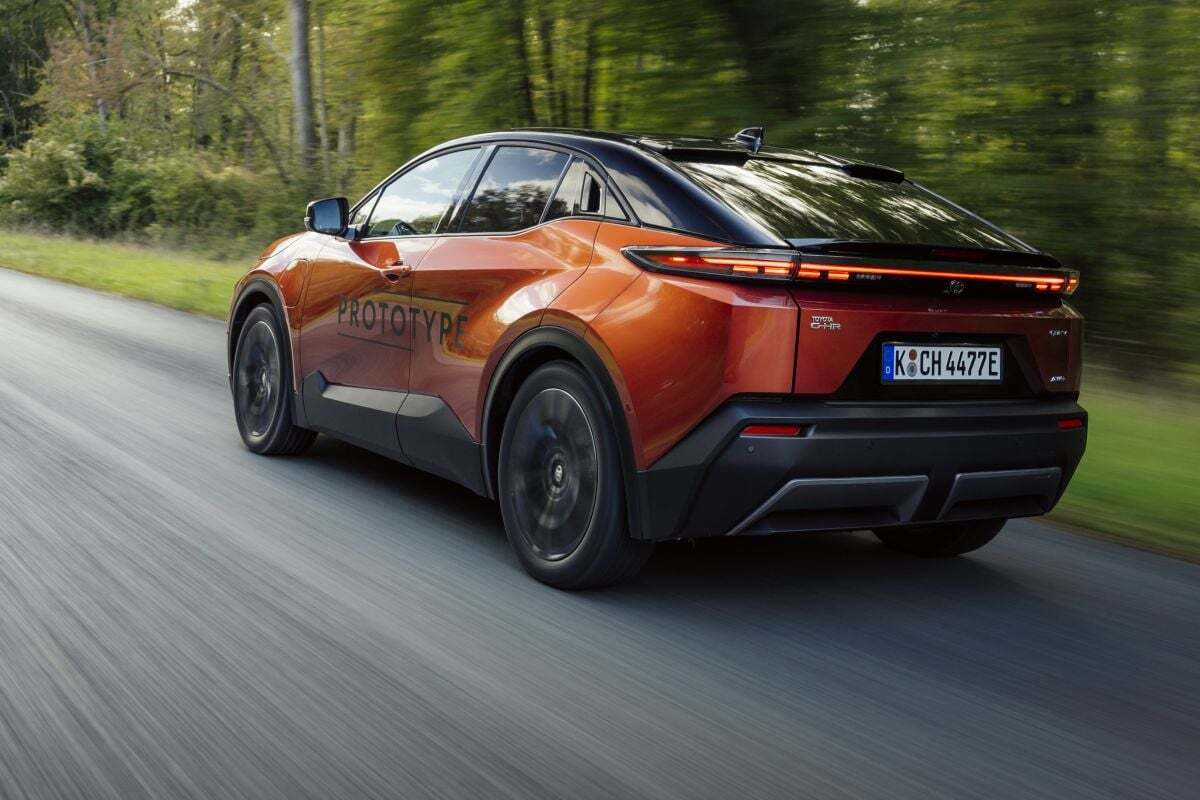
Up front, we see many similarities with the dashboard of its larger electric brother, the bZ4X, with which it shares the platform and technology. A downside remains the driver’s display, which, like in Peugeots, you can’t read with the steering column in the highest position. “Then just lower the steering wheel,” car salespeople say nonchalantly, but that remains an adjustment not everyone will accept. The wide center console offers two charging pads for phones, behind which sits an almost round knob for selecting the driving direction. The interior looks more original than in all those new Chinese electric cars, where it seems like the arrangement of a horizontal screen for the driver and a vertical display in the center is the mandatory standard layout. You quickly understand the menu of Toyota’s multimedia systems, partly because it doesn’t have as many functions and icons as many other brands. The operation could be faster.
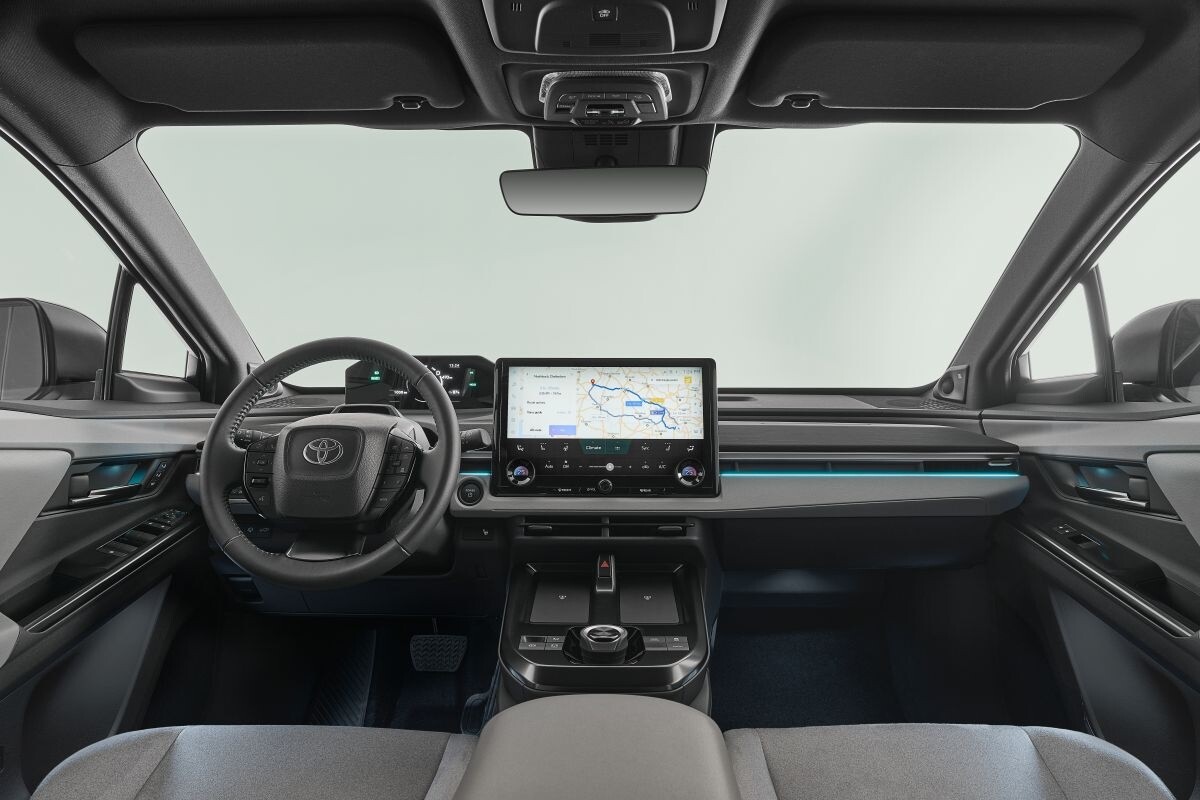
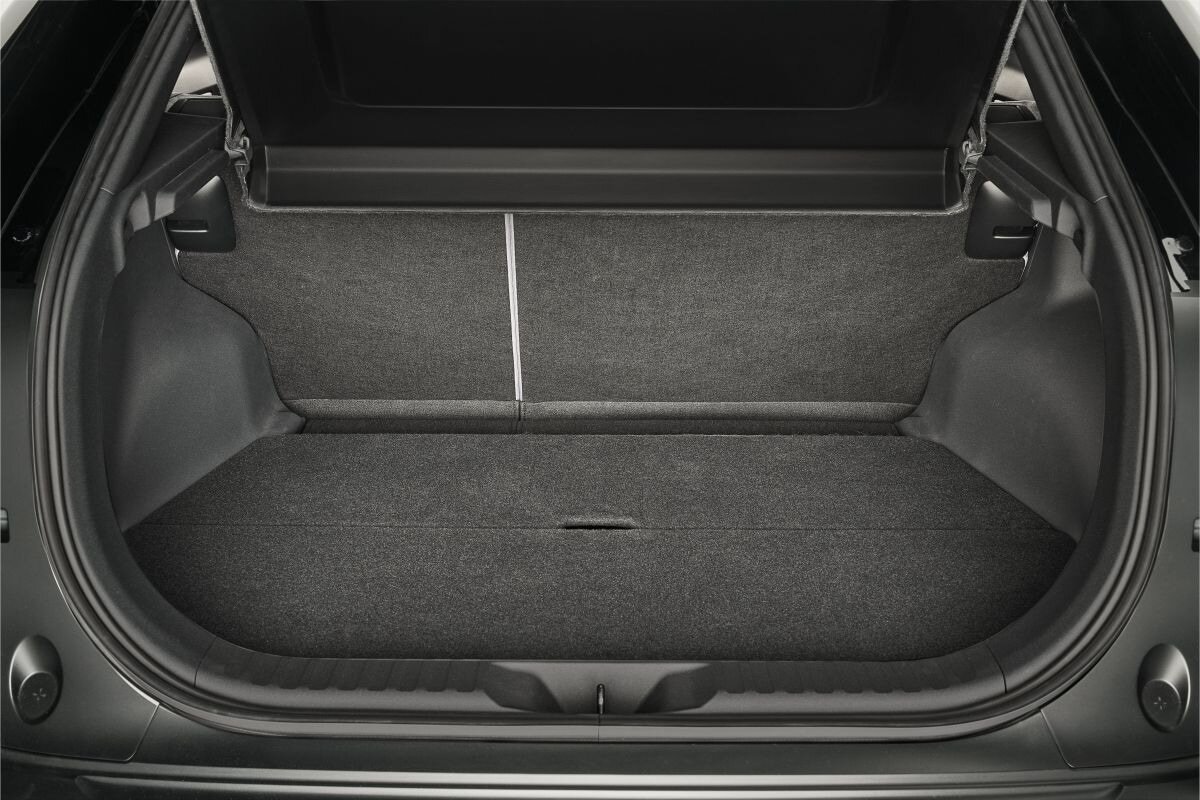
Are there different versions?
During the brief introduction, we drive the First Edition and the Executive. There’s also a Dynamic planned, which has to make do with a smaller battery pack and less powerful electric motor. The First Edition and Executive have a 77 kWh NMC battery, which in the Executive can be AC-charged at 22 kW as standard, and fast-charged at 150 kW. We’re not impressed by the latter. Why no 800-volt technology yet, as you see advancing in the higher segment? It’s a matter of cost. According to a development manager present at this event, this has to do with the price of semiconductors, which is much higher for 800-volt systems and also related to the quantities you purchase. At Kia, for example, you see that the EV6 does use 800-volt technology but all EV models below it don’t. Toyota prefers to point out the standard heat pump on all versions of the C-HR+. And that all three versions are equipped with seat and steering wheel heating, which also helps to spare the climate control on cold days. Pre-heating for fast charging is also factory-installed by Toyota.
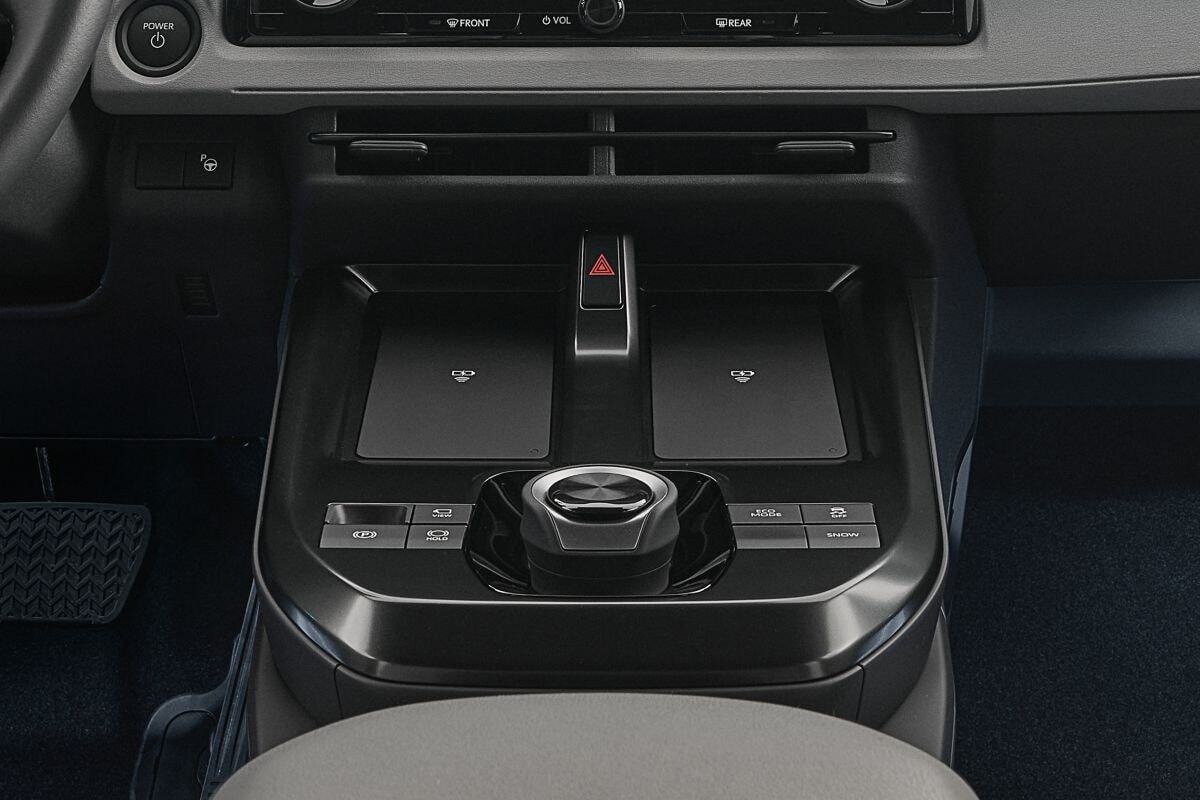
How does the C-HR+ drive?
The First Edition with the 224 hp electric motor on the front wheels gets off to a good start with eager pedal response. With steering wheel paddles, you can determine the level of regeneration, a good move to install in such a nicely active-feeling car. It involves you in the driving. And in that area, a Toyota with the name C-HR has a reputation to uphold. Of course, the electric crossover with this battery pack weighs a solid 1,900 kg (Executive with two motors 2,000) but the low center of gravity and firm spring and damper settings still manage to make it a dynamically feeling car. It barely leans over, with the nose seeking the inside of corners well when lifting off the throttle, only when taking speed bumps do you notice that the damping has to absorb quite a lot of weight. Through the small steering wheel, you get a lot of feedback about what the front wheels are doing, only the poor visibility of the nose sometimes makes it somewhat difficult to position the car well on roads with high curbs alongside. The tuning of this chassis feels like a breath of fresh air after all those Chinese newcomers we’ve driven in recent months. There’s finesse here, and a lot of experience. That will truly be the thing with which traditional car brands can distinguish themselves. Just as they must do with material use and ease of operation.
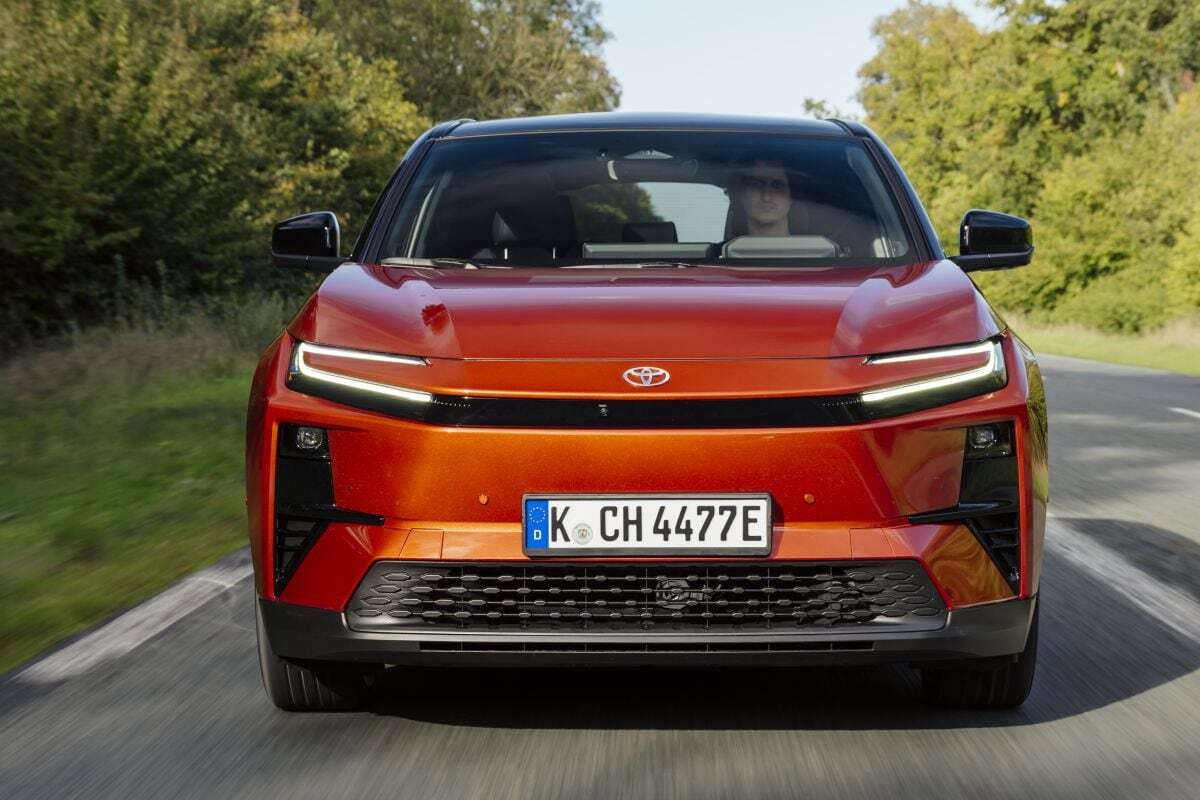
What is the range?
And then there’s consumption. In this early phase before market launch (spring 2026), Toyota cannot yet give us consumption figures, but when we read the onboard computer of the First Edition after a drive with brisk driving under ideal conditions, we see a neat 13.8 kWh/100 kilometers. Toyota does provide a WLTP range specification: 609 kilometers. The Executive we step into doesn’t get that far. With its two electric motors and a system power of 343 hp, this should become the most dynamic top model. It zooms from 0 to 100 km/h in 5.2 seconds and during the drive, its power never feels like too much. Feel free to make a GR Sport version with an even more tweaked chassis, already occurs to us. The + makes just as dynamic an impression as a normal C-HR but without the party-spoiling roar of a hybrid drivetrain where the combustion engine runs at a continuously high RPM.
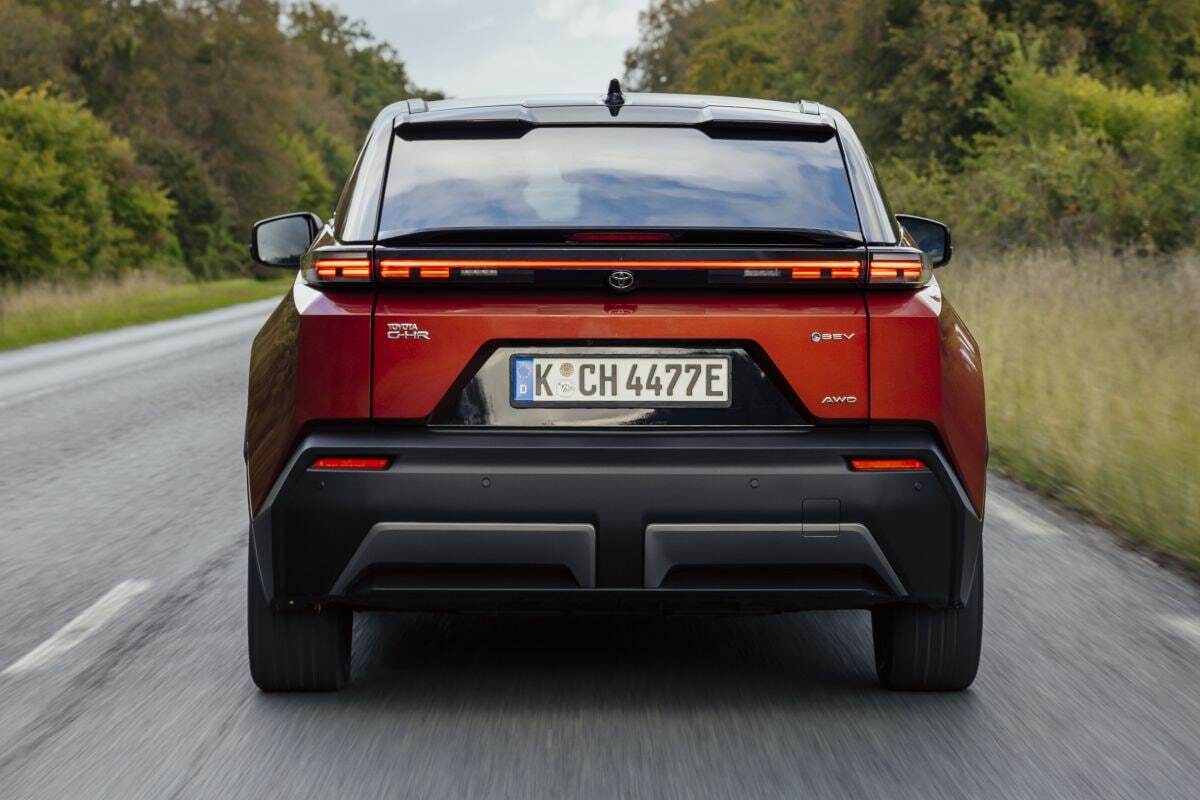
And what does the C-HR+ cost?
Prices will be announced in November. Since the bZ4X starts at €40,000, we’re betting on amounts starting at €38,000. You shouldn’t see the C-HR+ as a budget brother of that larger EV but as a somewhat more dynamic, sleek version that is indeed somewhat narrower. Toyota wants to attract non-EV drivers with ten years of warranty that also applies to the battery pack, or 1 million kilometers. However, you must have the annual service done at the Toyota dealer, including battery degradation check. If the state of health falls below 70 percent before that time, you have warranty. Properly towing a trailer is only allowed with the Executive: 1,500 kg, which is twice as much as with the front-wheel drive versions.